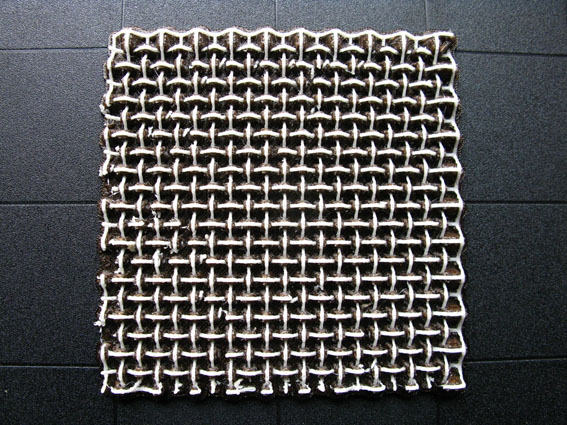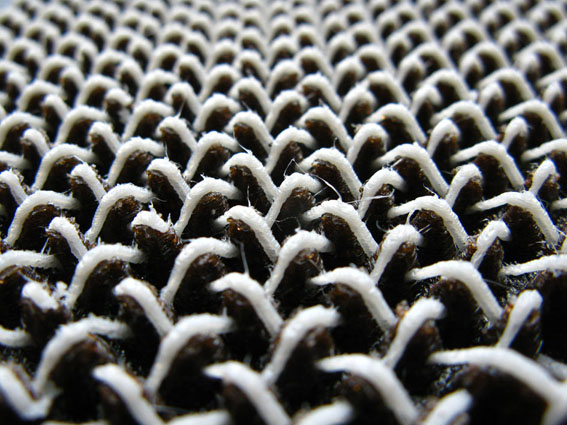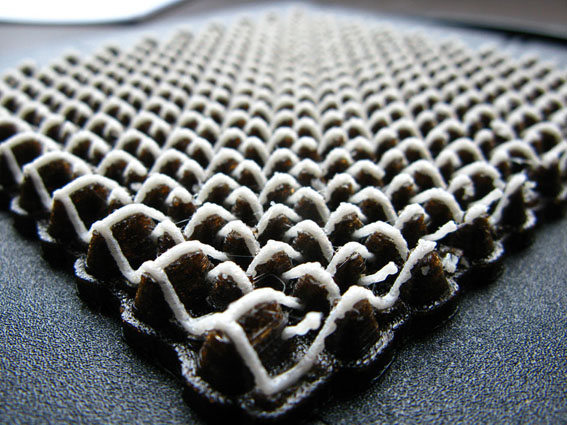Judy’s study of 3D printed weaving structure
by greatjudy
For this computational textile assignment I want to try the 3D printing textile. It is a good experience of learning!
It is my first time to do 3D printing, and I am a new hand in Grasshopper. So the work is challenging. I started from studying the basic structure of weaving, and then tried my best to build it in Grasshopper in Rhino, and managed to make a structure similiar to the textile weaving. The basic method is to build U-V grids on both sides of a surface, connected the points by nurbs, flattened them and deleted some points by “cull”, and finally “pipe” the curves.
After spending long time on learning the software and building the model, I could not catch up the deadline to send the file to shapeways. So I went to the Edgerton Student Center for 3D printing. However, since I do not have enough 3D printing experience, I did not “cap” the ends of pipes and the model printing totally failed.
Then I rebuilt the model and printed it again, which took an terrible long time of 24 hours…
Finally I got the model printed. However, the result is not ideal. Several parts are broken. Before going there, I did not know that there are many kinds of 3D printing and each has different characteristics. The 3D printer in Edgerton is based on FDM which is when the plastic gets squirted out in a bead. I did not realize it was too low resolution for my delicate model.
It is a very interesting process of learning! I want to thank Ilan Moyer, who is an expert in mechanical techniques and helped me a lot with the 3D printing!!












